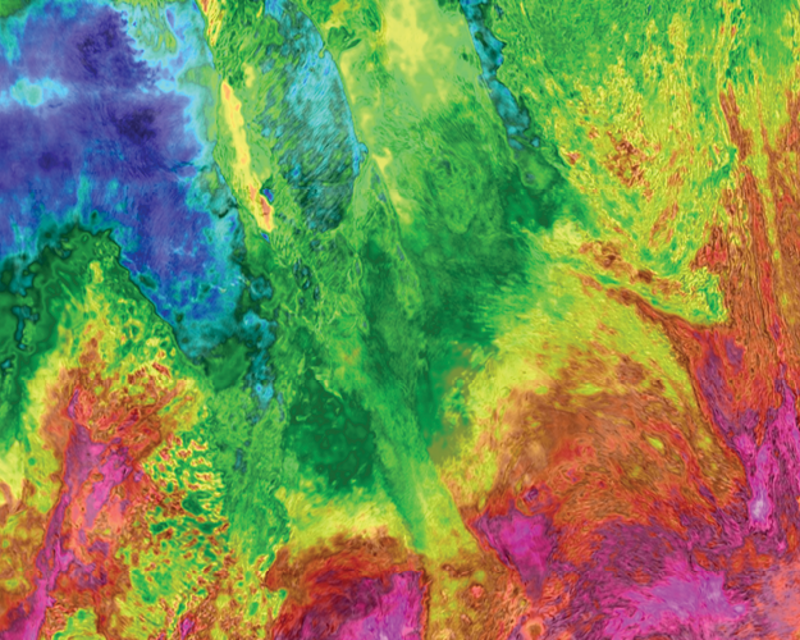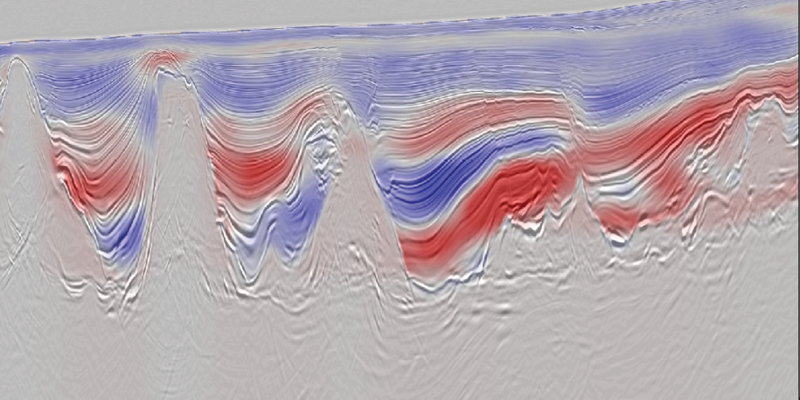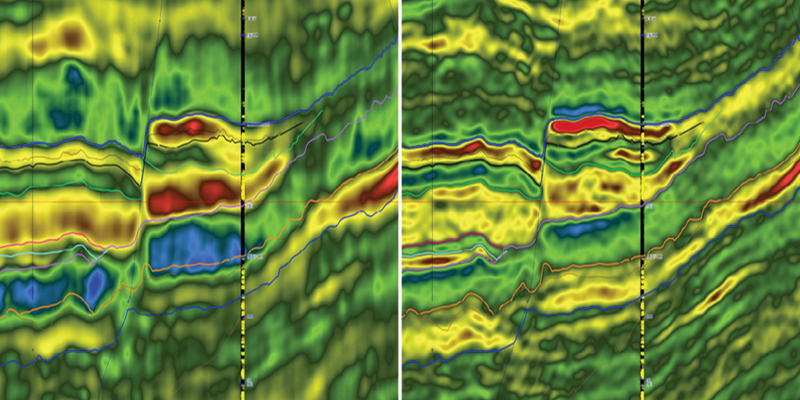- Tomographic solutions for fast and effective velocity model building in all geological scenarios
- PGS solutions apply accurate a 3D Q model in viscoacoustic solutions
- PGS FWI uses the full seismic wavefield, requires no density model and is less dependent on long offsets
- PGS Ultima is a novel one-step imaging breakthrough that is equivalent to performing FWI and least-squares migration in a single framework. It delivers an accurate velocity model and reflectivity model in an accelerated timeframe
Full waveform inversion (FWI) successfully resolves small-scale features particularly where reflection-based tomographic inversion is challenged, such as shallow-water environments and around high-contrast bodies, like salt and volcanics.
The PGS FWI solution uses both diving waves and reflections to update the velocity model. The use of reflection information relaxes the traditional dependence of FWI upon very long-offset acquisition.
PGS tomographic model building solutions are based on Kirchhoff approaches and our award-winning PGS hyperBeam migration platform. We offer PGS hyperTomo and PGS hyperModel tomographic solutions to simultaneously build models for velocity, anisotropy and Q.
All PGS migration algorithms are Q-enabled. A Q-velocity model building (Q-VMB) workflow is employed.
PGS Ultima is an evolution of FWI that yields models of both reflectivity and velocity.
Full Waveform Inversion

Contact a PGS expert
If you have a question related to our Imaging & Characterization services or would like to request a quotation, please get in touch.

